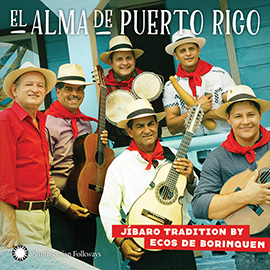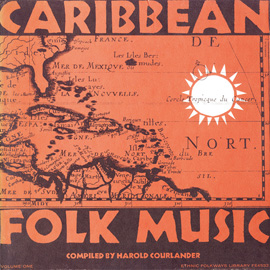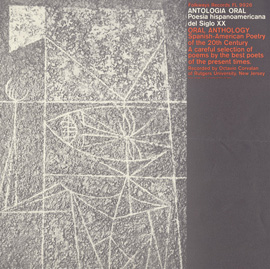Summary
Puerto Rican culture is a representation of the diverse heritages of three cultural groups: Taíno Indians, Africans, and Spaniards. This lesson focuses on the Spanish influences found in Puerto Rico’s musical culture by studying jíbaro music.
Suggested Grade Level: Grades 3-5, 6-8
Country: Puerto Rico
Region: Caribbean
Culture Groups: Puerto Rican, Spanish
Genre:
Instruments: Cuatro, Orff Instruments, Güiro
Language: Spanish
Co-curricular Areas: Language Arts, Social Studies
National Standards: 1, 2, 3, 4, 6, 7, 8, 9
Prerequisites: Students should have had some experience using Orff instruments.
Objectives:
- Students will be able to create lyrics using an assigned rhyming structure.
- Students will be able to create rhythms to the lyrics of a décima.
- Students will be able to improvise a melody with a given rhythm on an Orff instrument.
- Students will be able to sing the response section to a call-and-response song.
Material:
- Mohr, Nicholasa and Antonio Martorell. 1995. The song of el coquí and other tales of Puerto Rico. New York: Viking.
- Orff Instruments
- Güiro and pua (güiro stick)
- Musica del Pueblo Website: http://www.musicadelpueblo.org/
- Smithsonian Folkways, “Y amo la libertad (And I Love Freedom)” by Ecos de Borinquen from Jíbaro Hasta el Hueso: Mountain Music of Puerto Rico
- Smithsonian Folkways, “Seis Salinés” by Cuerdas de Borínquen from Puerto Rico in Washington
Lesson Segments:
- La Mula (National Standard 9)
- Jíbaro Music (National Standards 6, 7, 8, 9)
- Décima (National Standards 1, 2, 3, 4, 6, 8)
Lesson Segment 1: La Mula
- Introduce this lesson with a story written by Mohr and Martorell (1995) in the book, The Song of El Coquí and Other Tales of Puerto Rico.
- This tale is about a mule that was sold in Spain and brought to Puerto Rico. She befriended and helped Los Cimarrones in the mountaintops of Puerto Rico.
- Review terms used in the story (found in back of book):
- Los Cimarrones - a name given to the captive African slaves who escaped into the mountains and formed villages where they lived as free people
- El Bohio - a round cabin made of stalks or palm fronds that used to be common in Puerto Rico
- El Batey - Taíno word adapted to Puerto Rican vocabulary; a front yard made of solidly packed dirt, primarily found in rural areas
- La curandera/el curander o- a healer or wise person of the village
- Discuss La Mula’s journey to Puerto Rico and relate it to the journey that many Spaniards took across the seas.
- Discuss where La Mula lived and who her friends were.

Lesson Segment 2: Jíbaro Music - Puerto Rico’s “Country Music”
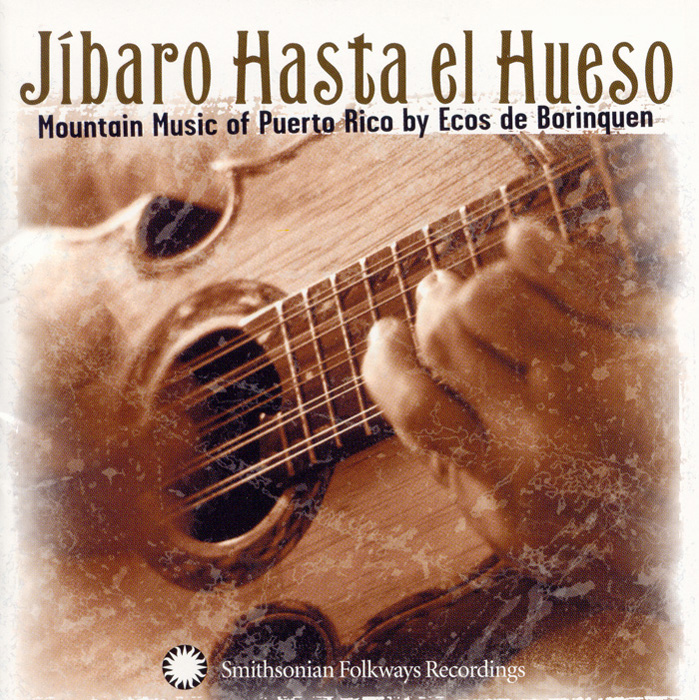
“Y amo la libertad (And I Love Freedom)”
from Jíbaro Hasta el Hueso: Mountain Music of Puerto Rico by Ecos de Borinquen (2003) | SFW40506
- Explain to students that musica jíbara comes from the mountain regions of Puerto Rico. This style of music comes from music brought to the island by early Spanish settlers during the 17th century.
- Listen to an excerpt from “Y amo la libertad (And I Love Freedom)” (Track 108) by Ecos de Borinquen from Jíbaro Hasta el Hueso: Mountain Music of Puerto Rico
- Ask students to write down what they think hear in the song (instruments, tempos, style, emotion, etc.). Then share and discuss.
- Point out that you heard one singer featured in the song.
- That singer is called a Trovador (an improvisatory singer/poet).
- Trovadors improvise phrases called “décima.”
- A décima has a poetic structure of 10 lines with eight syllables in each.
- Many times the topic of a décima in a jíbaro song is philosophical (love, patriotism, freedom, and dignity).
- Point out that one of the string instruments that you heard was the cuatro.
- This string instrument is unique to Puerto Rico and is often used for countryside folk music.
- Ask: Can you guess how many strings it has?
- Say: You might have thought it had four strings because of the instrument’s name, and most cuartros in Venezuela do have four strings, but in Puerto Rico, cuatros often have ten strings!
- The cuatro is a variant of traditional Spanish stringed instruments. It is smaller than the guitar and is shaped more closely to a violin than a guitar. Explain to students that the cuatro is a symbol of Puerto Rican people and their music. (Show students a photo here: http://www.i2clipart.com/clipart-puerto-rican-cuatro-02ea (public domain clipart).)

- Go to website: http://www.musicadelpueblo.org/, and click on the “Improvising” section of the mural. Then, select “Jíbaro Music.” Read the short article and watch the video.
- Point out the cuatro in the video and direct students to listen to the different phrases called décimas.

Lesson Segment 3: Décima
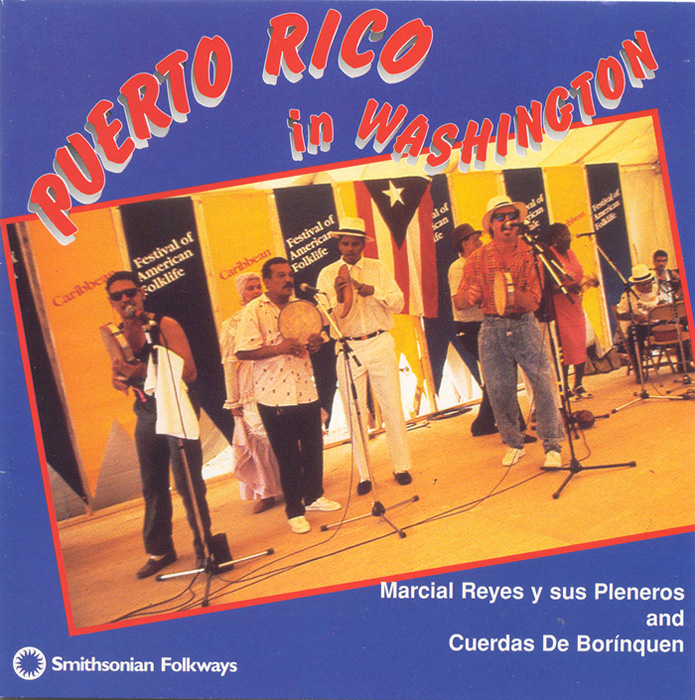
“Seis Salinés”
from Puerto Rico in Washington (1996) | SFW40460
- Explain to students that a décima is a poetic structure used in most verses. It includes:
- 10 lines of eight syllables
- A rhyming formula
- 1st line rhymes with the 4th, 5th, 8th, and 9th.
- 2nd line rhymes with the 3rd, 6th, 7th, and 10th.
- Introduce Seis Salinés by reading this excerpt from the liner notes:
- “Here the theme is the trovador’s own imagined death, and the role of the jíbaro singer himself. The poet tells us that on the day of his burial he wants a jíbaro ensemble with a trovador to improvise. He pleads with his countrymen not to abandon this vital musical art.”
- Display lyrics from excerpt ofSeis Salinés by Cuerdas de Borínquen
- Y yo sé que mis familiares
- Sufrirán porque me quieren
- Cuando eschuchen que me hieren
- Criticando mis cantares
- Y cuando en fiestas populares
- Eschuchen a otro cantando
- Ellos estarán pensando
- En dónde estará el cantor
- Que simbolizó el valor
- De un jíbaro improvisando
- (Translation)
- And I know my family
- Will suffer because they like me
- When they hear my pain
- Criticizing my songs
- And in popular parties
- When they hear another singer
- They will be thinking
- Where am I “the singer”
- This symbolizes the value
- Of improvising Jíbaro
- Play an excerpt, Seis Salines by Cuerdas de Borínquen (Track 110), from Puerto Rico in Washington
- Highlight words that rhyme using the “rhyming formula.”
- Y yo sé que mis familiares
- Sufriran porque me quieren
- Cuando eschuchen que me hieren
- Criticando mis cantares
- Y cuando en fiestas populares
- Eschuchen a otro cantando
- Ellos estarán pensando
- En dónde estará el cantor
- Que simbolizó el valor
- De un jíbaro improvisando
- Create a décima as a class by deciding on a poem theme or subject (write down suggestions from the class and vote on one), and using the “rhyming formula.”
Example:
Escape My Troubles
I love the sand on the island
When I walk around with no shoes
I’ll walk and walk ‘cause I can’t loose
The beach welcomes me to the sand
Telling me to stay on this land
Want to ignore any bad news
And stay here without any shoes
Since when I stay here on the beach
Nothing I dream is out of reach
Standing here without any shoes
- As a class, pay attention to:
- Rhythm:
- Model an example of a rhythmic way that you could speak the newly created décima.
- Split the class into five groups. Assign two lines of the newly created décima to each group and ask each group to create a rhythmic way to speak their assigned lines.
- Put the whole décima back together by having each group recite their lines
- Melody:
- Model an example of how you would improvise a melody for the rhythm and lyrics of the décima using an Orff xylophone.
- Select two lines from the décima.
- Ask group to recite their spoken rhyme for the lines.
- The rest of the class should then repeat the lines.
- Do this a couple of times until everyone knows the rhyme.
- Speak the rhyme and clap the rhythm created by each syllable, then have students echo.
- Speak the rhyme while playing the rhyme on the low C on a pitched Orff instrument.
- Speak the rhyme again, but improvise the melody by playing the same rhythm using any notes from C to C’.
- Split class into small groups and have them create their own décima.
- Randomly assign groups with the leftover themes suggested earlier or let groups choose their own theme.
- Follow the steps done as a class to complete the project.
- Use the rhyming formula.
- Once décima lyrics are created, you may want to assign each student in each group certain lines so that each individual creates a way to speak, play, and perform their lines.
- Create a “way to speak” your décima.
- Create a rhythm to go with the lyrics.
- Create a “way to play” your décima.
- Practice improvising melodies using the rhythm created in previous step.
- Invite each group to perform their décima for the class.
- Let students display their lyrics (using white board, poster board, or smart board).
- Each student performs their lines of the décima by speaking their lines and improvising a melody to the rhyme on an Orff instrument.
Extension: Students could add instrumental accompaniment to the décima performance. Students could all compose a melody for their décima and sing the lyrics for their assigned lines. Students could also notate their rhythms and/or melodies.
Assessment: Assess each individual student while they perform their lines in the décima.




